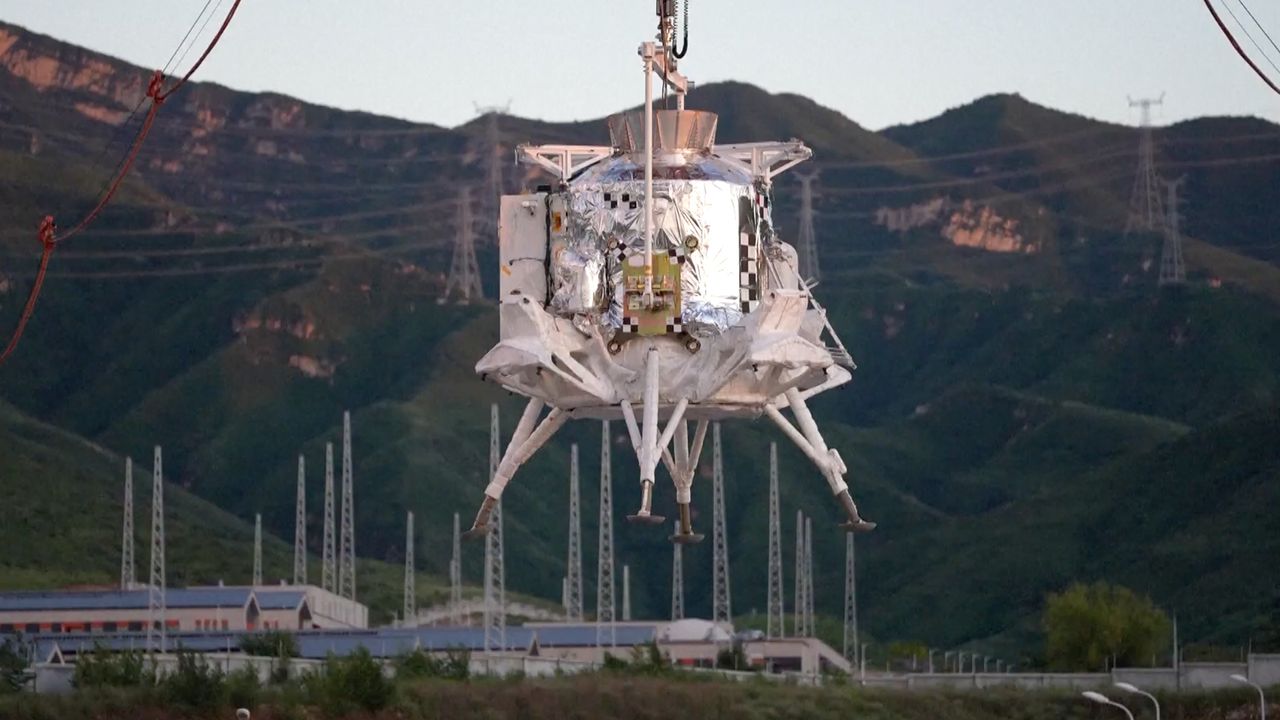China is advancing rapidly in its objective to land astronauts on the moon by 2030. This ambition was underscored during a significant ground test on August 15, 2025, when the country successfully tested the first-stage propulsion system of the Long March 10 (CZ-10) rocket. This new rocket is designed to facilitate human spaceflight towards the lunar surface.
The Long March-10A variant will be instrumental in launching the Mengzhou piloted spacecraft and the uncrewed Tianzhou freighter, both essential for the ongoing development of China’s Tiangong space station in Earth orbit. The recent static fire test involved a modified version of the CZ-10’s first stage, equipped with a configuration of seven YF-100K engines powered by liquid oxygen and kerosene fuel.
In this latest test at the Wenchang Satellite Launch Center in Hainan Province, the engines operated for approximately 35 seconds, achieving a thrust level close to 1,000 tons, setting a new record for China’s space program.
Technical Insights from the Test
Xu Hongping, an engineer with the China Aerospace Science and Technology Corporation (CASC), explained to state broadcaster CCTV that the first stage and boosters of the Long March-10 rocket represent a “universal core stage,” comprising three identical core modules bundled together. Another engineer, Peng Yue, highlighted the importance of the power system test, describing it as crucial for assessing the thermal and mechanical conditions created by the simultaneous operation of all seven engines.
This test is a vital step in ensuring system compatibility and reducing risks ahead of the rocket’s first flight.
Progress Towards Lunar Exploration
The successful static fire test follows several key achievements in China’s lunar mission timeline this year. For instance, on June 17, a pad-abort test of the Mengzhou crewed spacecraft was conducted successfully. The escape engine ignited and propelled the capsule-tower assembly upward, with the return capsule safely detaching at a predetermined altitude. This marked the first zero-altitude escape test for a crewed spacecraft in 27 years, reminiscent of a similar test conducted for the Shenzhou spacecraft in 1998.
On August 6, China also executed a simulated takeoff and landing of the two-person “Lanyue” lunar lander at an extraterrestrial celestial landing test site in Zhangjiakou, Hebei Province. This site previously tested the Tianwen-1 Mars lander, which successfully operated the Zhurong rover on Mars from May 2021 to May 2022.
The Lanyue lander is designed to transport two astronauts between lunar orbit and the moon’s surface. It will also carry a lunar rover and scientific payloads to support extended astronaut missions. The recent test validated critical systems for lunar touchdown and takeoff, ensuring compatibility between subsystems in guidance, navigation, control, and propulsion.
According to the China Manned Space Agency (CMSA), Lanyue will serve as a “lunar life center, energy center, and data center” for astronauts, aiding in their residence and activities on the moon.
In preparation for lunar excursions, the CMSA unveiled a new lunar spacesuit last September. This advanced suit is engineered to protect astronauts from the moon’s harsh thermal environment and pervasive dust. It includes a multifunctional integrated control panel, cameras for documenting activities, and flexible gloves designed for low-gravity tasks, all while remaining lightweight for mobility on the lunar surface.
As China continues to achieve significant milestones in its lunar exploration agenda, its commitment to a human presence on the moon by 2030 is becoming increasingly tangible. The combination of advanced technology and strategic planning positions China as a leading player in the next era of space exploration.
